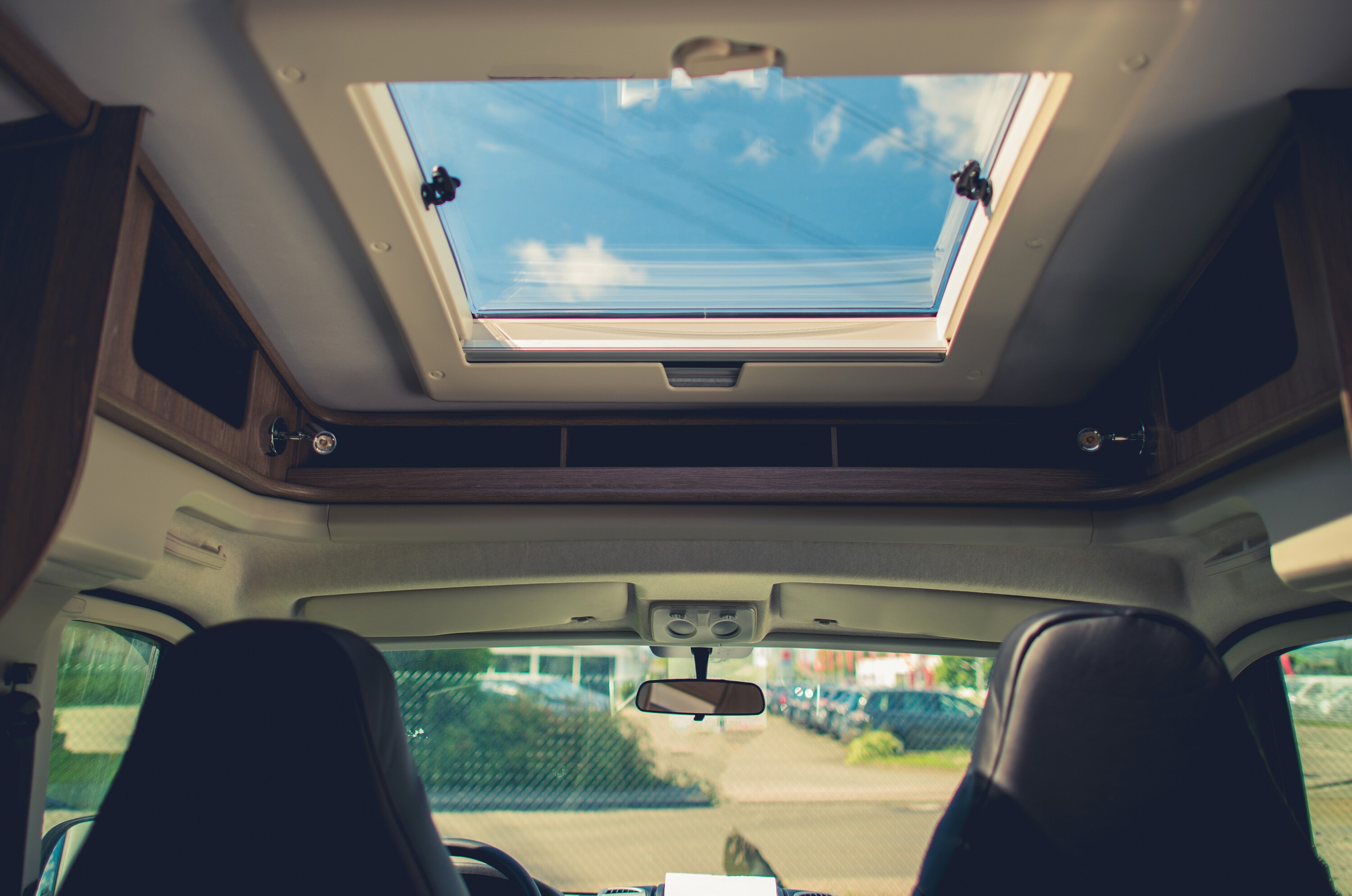If you go camping enough, you’ve no doubt encountered some rain. Thanks to the construction of our RVs, we have a solid roof over our heads, one that won’t let in the water or the dampness – or will it? Keeping your RV’s roof in tip-top shape is the topic of this article. It’s a valuable component of our RVs, and it’s essential that it be well-maintained.
First, let’s look at the types of roofs that are available on the market. You have rubber, which is probable the most common. Then there’s fiberglass. This tougher-than-rubber material is becoming more common in industry designs, as campers want something durable and long-lasting. They are also fairly low maintenance. You just need to factor in the added cost and weight this type of roof has on your purchase decision. And finally, aluminum (think, Airstream). This is not a frequently used material for most RV manufacturer.
When purchasing an RV, don’t just ask what the roof of the unit you’re considering is made of, ask about durability, maintenance requirements, and potential replacement costs should the need ever arise. Review manufacturers and their track record of roof problems if you can to make sure the workmanship is there to deliver a quality product – and a quality roof.
All roofs can require yearly maintenance, including roof coating (a protective layer that replaces what has worn off over time) and caulking around the edges of the roof line, vents, skylights, etc., to keep the seals intact and the water out. The maintenance required depends on (1) the material and (2) your RV’s exposure to the elements. Look for potential issues such as wrinkles or puffs.
Also, give the roof a little TLC by keeping it clean. Wash it at least twice a year and try not to park under trees that drop sap. Make sure you use the correct type of cleaner as many chemicals can be abrasive to the finish and damage the material. First, sweep off debris. If you have a roof that can be walked on, then go up there with a kitchen broom. If not, then do your best from the ladder and wipe off as much as possible using a long handled broom or scrub brush. Then it’s time to scrub and rinse. All vents should be closed. Work section by section, checking for problems as you go. Then, protect your roof with a surface treatment. This again depends on the type of material.
There are usually other components to your RV’s roof than just the roof itself. There are often air conditioners and roof vents with or without fans as well as items such as TV antennas. You’ll need to check on the seals around these as well. A cracked seal can spell disaster when the next storm comes along, leading to significant damage.
Speaking of damage, look for signs on the interior of your RV that could indicate a problem with your RV’s roof including water stains on the ceiling and inside upper cabinets. Appearances can be deceptive. The problem might very well be under the membrane or top cover layer of your roof, hidden from view but causing problems nevertheless.
When storing your RV, it’s a good idea to keep your RV covered, whether it’s stored indoors or out. An RV cover keeps away dirt, sand, snow, and sun as well as helps moisture to evaporate. However, covers can still cultivate mildew and prevent airflow around the RV. You don’t necessarily have to “air it out” during the storage season, but if you have an RV around that isn’t frequently used (i.e., you can go a year or two without camping), then you should routinely uncover the RV.
A tarp may seem like a good alternative to an RV cover, but they trap moisture and allow zero breathability. It’s only a short-term solution. You really want to keep your RV’s roof – and everything else – as pristine as possible.
What about if your RV’s roof gets damaged? Low or fallen tree branches, bridges, etc., can cause damage to the roof. Of course, the best solution is prevention. There are lots of hazards, such as low signs and bridges, which can be avoided with a little forethought and by lifting off the gas pedal. If the damage is small, a small rip or tear, then a patch can be used to cover the area.
A roof will show signs of wear over time, especially if you camp often and in sunny spots where it receives direct exposure. Be proactive and check on the state of your roof once a month during the season, before storing, and when the RV comes out of storage. Fix any problems you see as quickly as possible.

